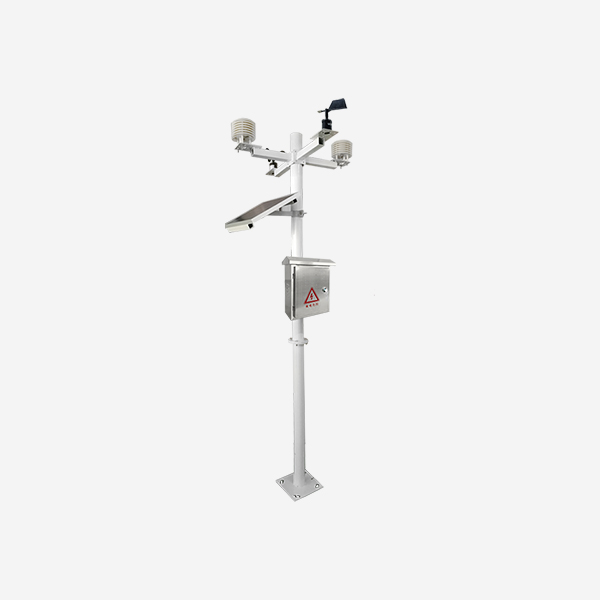A weather station provides users with comprehensive weather information. Regular maintenance of weather stations is an important task to ensure measurement accuracy and prolong service life. If done regularly, maintenance will be a relatively easy task. Weather equipment has been working outdoors for a long time. After severe weather, users are advised to check the status of the weather station. For example, check that the anemometer is in good condition, that it can turn freely throughout the winter, and that the rain gauge is free of leaves, bugs, waste paper, etc. Is there sand residue on the solar panels?
Disclaimer: Maintenance procedures will vary according to the brand and model of the weather station. Besides, some weather sensors and components are precision technology. Care should be taken when cleaning and maintaining. For details, please refer to the user manual of the particular weather sensor. In addition, all weather stations are different. This is a general guide and is not specific to your specific weather station model.

Temperature sensor
The temperature and humidity sensor module is installed inside the solar radiation shield. During the natural gas flow, it enters through the louvered vents around the radiation shield and is measured by the temperature and humidity sensor. Therefore, there is almost no need for regular maintenance. However, when installing in windy and sandy areas, after the storm, you need to wipe off the residual sand around the radiation shield with a soft wet wipe. Secondly, using in winter every year, you need to check whether the radiation shielding cover is damaged, if any, please replace it in time to protect the internal measurement module.
Wind sensor
The common structure of the wind speed sensor is a three-cup type. The wind cup is easily contaminated with sand or insect webbing during the working process, and long-term accumulation will cause movement restrictions, which will affect the reliability of the wind measurement data. Therefore, the surface of the wind cup should be cleaned regularly. Besides, after checking that the appearance is not damaged, the user needs to manually rotate the shaft to check whether there is any foreign matter stuck inside. If there is a foreign body jam, it needs to be disassembled and cleaned. This process requires professional technical support. You can contact us for help.
The important part of the wind direction sensor is the wind vane. Any blade obstruction or adhesion of insect fabrics will affect the accuracy of the measurement position. It is recommended that the user regularly wipe the surface of the wind vane with wet wipes or alcohol to ensure that there is no adhesion. Also, check if your weather vane can rotate freely. Compared with the wind cup, the turning resistance of the wind vane will be slightly larger. This slight resistance is to improve measurement accuracy. The wind direction sensor can be calibrated once a year to reduce the use error.
Rain gauge
The rain gauges used in weather stations are tipping bucket rain gauges, so the most common problem is the obstruction of the gutter. Sundries such as fallen leaves, insects, stones, feathers, etc. affect rainwater to enter the tipping bucket and cause measurement deviation. When maintaining the rain gauge, first clean the sundries on the top rain port, then check whether there are obstacles in other exit paths, wipe the rain gauge parts with a soft tissue or damp cloth, and finally check whether it is level during installation.
UV sensor
To obtain accurate UV measurement results, please clean the photosensitive surface of the uv sensor regularly. Use a cloth to remove dust or debris that has accumulated on the lens or cover. At the same time, check whether the photosensitive surface of the sensor is perpendicular to the light source.
Rain and Snow sensor
The rain and snow sensor is a measuring device that measures whether it is raining or snowing outdoors. It uses the sensor plate on the surface to measure rain and snow. Although the sensor has an internal heating function, which can effectively prevent the surface from freezing in winter, it is easy to accumulate dust on the surface after long-term use, so it is necessary to wipe the surface with a soft wet wipe regularly. Dust or other debris.
Solar radiation sensor
The measuring element of the solar radiation sensor is installed in a transparent waterproof case. To ensure accurate solar radiation measurement, the transparent case should be gently wiped with a clean and soft wet wipe during use to ensure that the sunlight is normally irradiated without obstruction.
Negative oxygen ion detector
The negative oxygen ion detector is usually installed in the waterproof box of the weather station together with the weather station host. The negative oxygen ion detector and the weather station host are not waterproof, so long-term use should check whether the waterproof box is leaking. Secondly, there is a vent at the bottom of the waterproof box, and the negative oxygen ion detector draws air through this vent to measure The number of negative oxygen ions. Therefore, foreign objects such as leaves, insects, smoke, and dust in the vents should be cleaned regularly.